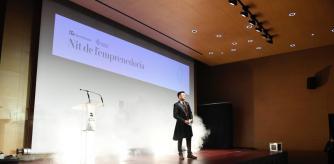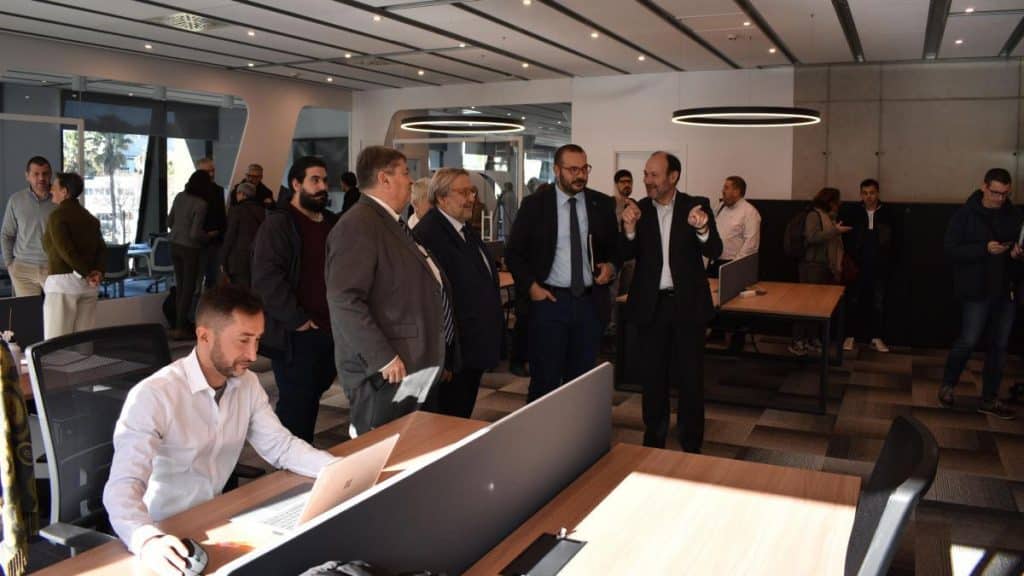Renfe’s general director of Strategy and Development, Manel Villalante, accompanied by the mayor of Mataró, David Bote, and by the general director of the TecnoCampus Foundation, Lluís Checa, visited the Antena TrenLab facilities this morning, where this week begins a complete six-month acceleration program of innovative projects at the service of mobility.
Villalante, Bote and Checa have toured the facilities of the Antena TrenLab space, which are already prepared to host the various startups that, last November, were finalists and winners of the first Antena TrenLab awards. This space constitutes the first Renfe antenna or meeting point for open innovation and entrepreneurship, with an important social and educational character for the transmission of all the knowledge and values generated. With this first antenna, Renfe, in collaboration with different local and regional entities, has begun the creation of a state-wide network of TrenLab Antennas.
Interaction with TecnoCampus
In this context, the entrepreneurs will have specialized experts and mentors who will accompany them in the growth of their solution, not only for the railway sector, but also with an impact in the field of mobility and, in this case, in the Maresme region.
This initiative responds to Renfe’s desire to continue investing in the creation of new knowledge, with the aim of promoting the creation of innovative solutions that contribute to the digital transformation of the railway company. This purpose is shared by the other two entities that are part of the first TrenLab antenna, the Mataró City Council and TecnoCampus, to which is added the creation of local employment and the involvement of the citizens of the region in the creation of new models of mobility and values oriented towards environmental improvements associated with transport.
Read also Fede Cedó
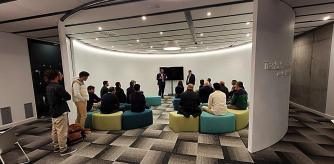
In this sense, and with the start of the startup acceleration program, also starting today and throughout 2023, a set of activities will be carried out to involve local and regional entities in the project, allowing greater permeability of the advances achieved in the field of mobility and transport, incorporating more actors into the innovation ecosystem.
With an endowment of 150,000 euros per edition, the call aims to promote innovative solutions that solve the challenges of the railway sector. Each year, four entrepreneurial projects are chosen to enter a six-month acceleration program that includes the possibility of testing the solution in the territory of Mataró and the Maresme.
This initiative stems from Renfe’s experience with the TrenLab startup accelerator, where during the four calls a total of 15 startups have been accelerated, of which 4 were Catalan, a figure that represents 26% of the drive born and activated in Catalonia.
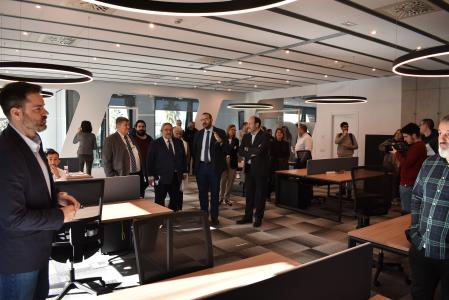
The authorities during the visit to the Renfe Tren Lab Antenna in Mataró
Oriol Ribet / TCM
The four emerging companies that were selected in the last Antena TrenLab awards promoted by Renfe and that are starting the acceleration program are:
Smarts Railway Station
Aimed at promoting technological solutions in stations that allow Renfe Cercanías customers to be offered more valuable information about their travel environment.
With the CACTUS project, which proposes a network of IoT devices and a sustainable technological platform with the capacity to provide information of interest to passengers in real time, such as environmental characteristics (CO2, temperature, humidity, PMs to determine air quality, VOC…) , occupation of the trains and their real-time position that provide valuable information both to the service operator and to the users.
Customer Hapiness
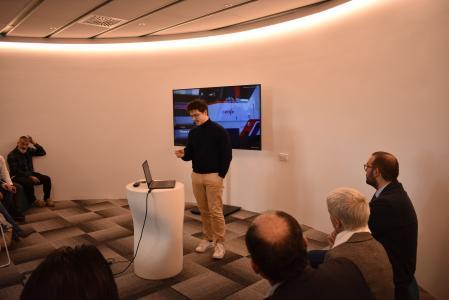
Nil Mandri, from Customer Happiness, explaining the project
Oriol Ribet / TCM
Intended for the search for startups that help improve the constant interaction with the client and allow the implementation of improvements in the service and daily operations of Renfe Cercanías. The Wipass project proposes to unify digitization and accompany the user from the beginning to the end of their journey, offering a unique and connected experience with Renfe. And, in turn, Renfe will be able to obtain relevant information about the experience, interaction and satisfaction of travelers, once the service ends, as well as offer valuable information about the environment of their trips, such as outstanding offers according to their destination, tourist information around and even offer other services. In addition, during the journey, the user will be able to receive information of interest such as deficiencies, destination data or arrival time through push notifications without having to download an application. The 3Drail challenge offers solutions that explore how to introduce 3D printing technology for adoption in the rail sector as a competitive and sustainable alternative to traditional manufacturing methods.
Dry cat
A project of integration of all the necessary actors so that the adoption of technology is the most adjusted to the needs of the company, its services and the territory, and in the shortest possible time, has presented an innovative project in the manufacture of spare parts industries through design and additive manufacturing in the shortest possible time. It wants to integrate all the necessary actors through training and workshops that allow generating a learning process in relation to 3D printing.
Hypervisoul
Traffic management system for connected vehicles to operate fleets of automated and light rail vehicles on rural railway lines to operate on-demand transportation services for passengers and freight.
Also read Judith Vives
